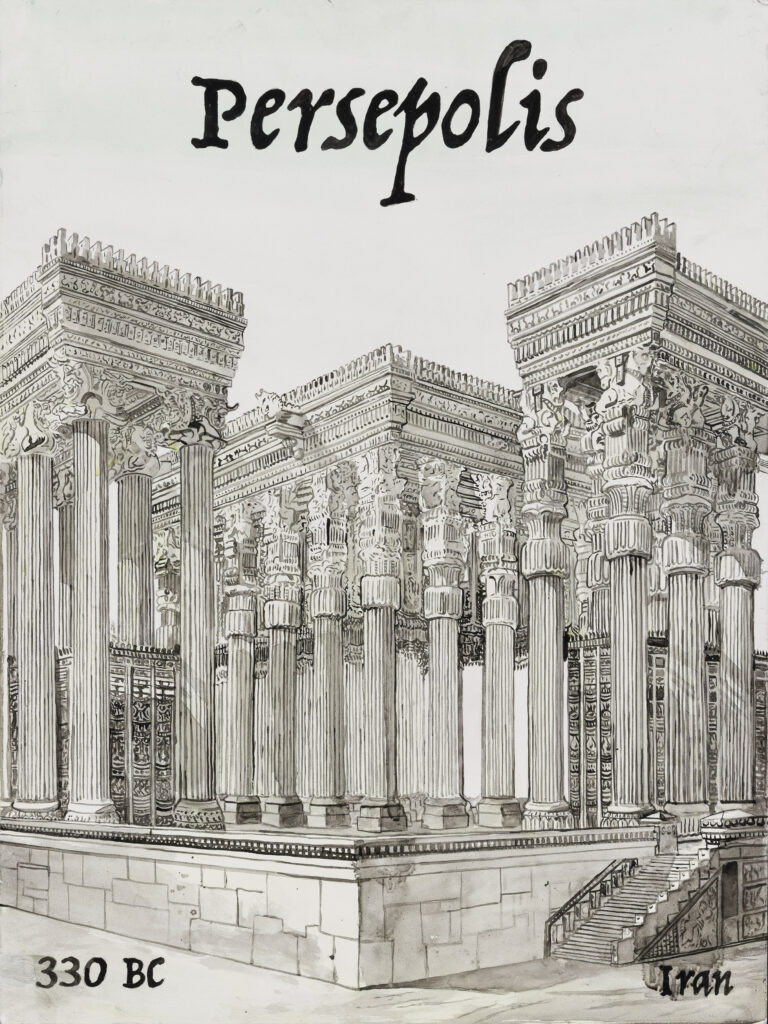Fars Province, Iran
Sacked 330 BCE

Requested by an art student from Iran who did not want to give his name.
Persepolis (Persian: تخت جمشید) was the ceremonial capital of the Achaemenid Empire which lasted from approximately 550 – 330 BCE, when Alexander the Great defeated Ariobarzanes of Persis and either accidentally or deliberately burned the spectacular Apadama palace complex to the ground. One story has it that during the drunken revelry of Alexander’s victory games, the courtesan Thais suggested that the palaces be burned by the Macedonian women to repay the Persians for Xerxes destruction of the Acropolis in Athens. While the city continued to be inhabited for some time after its sacking, it was eventually abandoned. Artifacts and sculptures from Persepolis can be found in many museums including the British Museum, the Fitzwilliam Museum, New York’s Metropolitan Museum and the Louvre. In 1971, Persepolis was the site of the 2,5000 Celebration of the Persian Empire held by Mohammad Reza Shah. The ruins were declared a World Heritage Site in 1979. This painting is based on an engraving by Charles Chipiez (1835 – 1901), a French architect and historian of the architecture of antiquity. The engraving shows his recreation of the Apadama palace.